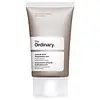What's inside
What's inside
 Key Ingredients
Key Ingredients

 Benefits
Benefits

 Concerns
Concerns

 Ingredients Side-by-side
Ingredients Side-by-side

Water
Skin ConditioningIsodecyl Neopentanoate
EmollientDimethicone
EmollientAzelaic Acid
BufferingDimethicone/Bis-Isobutyl PPG-20 Crosspolymer
EmollientDimethyl Isosorbide
SolventHydroxyethyl Acrylate/Sodium Acryloyldimethyl Taurate Copolymer
Emulsion StabilisingPolysilicone-11
Isohexadecane
EmollientTocopherol
AntioxidantTrisodium Ethylenediamine Disuccinate
Isoceteth-20
EmulsifyingPolysorbate 60
EmulsifyingTriethanolamine
BufferingEthoxydiglycol
HumectantPhenoxyethanol
PreservativeChlorphenesin
AntimicrobialWater, Isodecyl Neopentanoate, Dimethicone, Azelaic Acid, Dimethicone/Bis-Isobutyl PPG-20 Crosspolymer, Dimethyl Isosorbide, Hydroxyethyl Acrylate/Sodium Acryloyldimethyl Taurate Copolymer, Polysilicone-11, Isohexadecane, Tocopherol, Trisodium Ethylenediamine Disuccinate, Isoceteth-20, Polysorbate 60, Triethanolamine, Ethoxydiglycol, Phenoxyethanol, Chlorphenesin
Zinc Oxide 17%
Cosmetic ColorantWater
Skin ConditioningCaprylic/Capric Triglyceride
MaskingIsododecane
EmollientPropanediol
SolventPolyglyceryl-6 Polyricinoleate
EmulsifyingC12-15 Alkyl Benzoate
AntimicrobialDimethylmethoxy Chromanol
AntioxidantDimethicone
EmollientPolymethylsilsesquioxane/Trimethylsiloxysilicate
Coco-Caprylate/Caprate
EmollientBetula Alba Bark Extract
MaskingEthylhexyl Palmitate
EmollientPolymethylsilsesquioxane
Disteardimonium Hectorite
StabilisingPolyglyceryl-10 Dioleate
EmulsifyingPolyhydroxystearic Acid
EmulsifyingLecithin
EmollientJojoba Esters
EmollientEctoin
Skin ConditioningBoswellia Serrata Extract
Skin ConditioningPolygonum Cuspidatum Root Extract
AntioxidantCentella Asiatica Extract
CleansingButyrospermum Parkii Butter
Skin ConditioningGlycerin
HumectantLavandula Angustifolia Oil
MaskingPelargonium Graveolens Flower Oil
MaskingTapioca Starch Polymethylsilsesquioxane
AbsorbentPropylene Carbonate
SolventPolysilicone-11
Tromethamine
BufferingPolyglyceryl-10 Laurate
Skin ConditioningOctyldodecanol
EmollientTrihydroxystearin
Skin ConditioningAlumina
AbrasiveSilica
AbrasiveEthylhexylglycerin
Skin ConditioningCI 77891
Cosmetic ColorantIron Oxides
Phenoxyethanol
PreservativeZinc Oxide 17%, Water, Caprylic/Capric Triglyceride, Isododecane, Propanediol, Polyglyceryl-6 Polyricinoleate, C12-15 Alkyl Benzoate, Dimethylmethoxy Chromanol, Dimethicone, Polymethylsilsesquioxane/Trimethylsiloxysilicate, Coco-Caprylate/Caprate, Betula Alba Bark Extract, Ethylhexyl Palmitate, Polymethylsilsesquioxane, Disteardimonium Hectorite, Polyglyceryl-10 Dioleate, Polyhydroxystearic Acid, Lecithin, Jojoba Esters, Ectoin, Boswellia Serrata Extract, Polygonum Cuspidatum Root Extract, Centella Asiatica Extract, Butyrospermum Parkii Butter, Glycerin, Lavandula Angustifolia Oil, Pelargonium Graveolens Flower Oil, Tapioca Starch Polymethylsilsesquioxane, Propylene Carbonate, Polysilicone-11, Tromethamine, Polyglyceryl-10 Laurate, Octyldodecanol, Trihydroxystearin, Alumina, Silica, Ethylhexylglycerin, CI 77891, Iron Oxides, Phenoxyethanol
 Reviews
Reviews

Ingredients Explained
These ingredients are found in both products.
Ingredients higher up in an ingredient list are typically present in a larger amount.
Dimethicone is a type of synthetic silicone created from natural materials such as quartz.
What it does:
Dimethicone comes in different viscosities:
Depending on the viscosity, dimethicone has different properties.
Ingredients lists don't always show which type is used, so we recommend reaching out to the brand if you have questions about the viscosity.
This ingredient is unlikely to cause irritation because it does not get absorbed into skin. However, people with silicone allergies should be careful about using this ingredient.
Note: Dimethicone may contribute to pilling. This is because it is not oil or water soluble, so pilling may occur when layered with products. When mixed with heavy oils in a formula, the outcome is also quite greasy.
Learn more about DimethiconePhenoxyethanol is a preservative that has germicide, antimicrobial, and aromatic properties. Studies show that phenoxyethanol can prevent microbial growth. By itself, it has a scent that is similar to that of a rose.
It's often used in formulations along with Caprylyl Glycol to preserve the shelf life of products.
Polysilicone-11 is a film-forming silicone that creates a non-tacky and matte finish on the skin. It's commonly used to improve texture, absorb excess oil, and help active ingredients spread evenly.
Due to its "rubber-like" structure, it stays on the skin's surface instead of being absorbed. On the skin, it creates a flexible layer that enhances wearability and stability.
Water. It's the most common cosmetic ingredient of all. You'll usually see it at the top of ingredient lists, meaning that it makes up the largest part of the product.
So why is it so popular? Water most often acts as a solvent - this means that it helps dissolve other ingredients into the formulation.
You'll also recognize water as that liquid we all need to stay alive. If you see this, drink a glass of water. Stay hydrated!
Learn more about Water